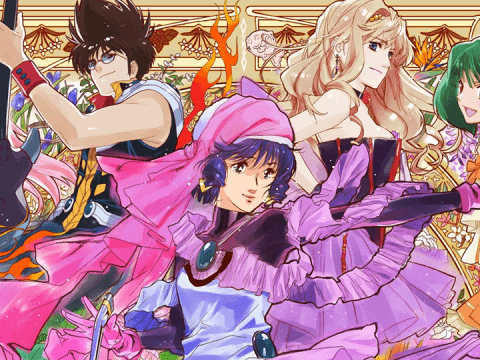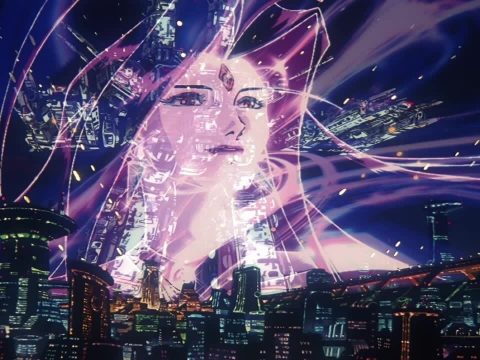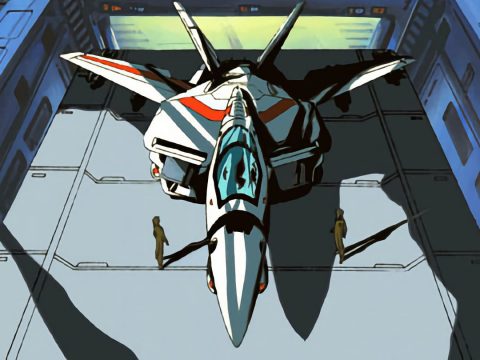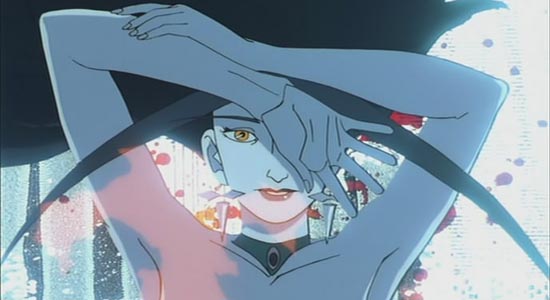
Ah, Macross. One of the great titans of Japanese animated science fiction, this space opera about jet planes that fly in outer space, transform into robots, and fire swarms of missiles amidst a backdrop of interspecies warfare and love triangles involving pop music idol singers makes for a kind of entertainment far removed from anything you’ll see in any other medium. That’s precisely what drew people to it and this whole “anime” thing: it’s “like nothing you’ve ever quite seen before.” The majority of anime created is adapted from pre-existing source material, but Macross wasn’t originally a manga, novel, or game. I love Patlabor, but perhaps Macross is what embodies the purest distilled essence of “anime” such that adapting it into any other medium besides Japanese animation fundamentally deprives it of one of its critical elements that makes it “work.” You might even say that Macross IS “anime”… for all that entails.
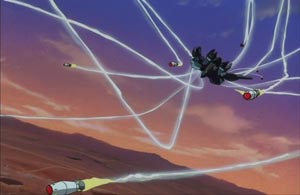
In the April 2011 issue of Otaku USA magazine I spoke of Macross Frontier: The False Songstress, the first of two theatrical film re-imaginings of the Macross Frontier TV series. Although I enjoyed it, if the viewer hasn’t seen previous entries in the series they’d be rather confused. Many of the biggest media franchises, be they anime or otherwise, originated several years if not decades ago. This makes for some intimidating barriers to entry for the neophyte onlooker made curious whenever the inevitable production of a new installment comes about. Most who have ever found themselves wondering “can I just watch this new one, or do I have to watch the old ones to understand this?” will generally be met by a group of intensely devoted aficionados who respond “you MUST first watch this series from several decades ago in order to have the suitable level of context to fully appreciate this work!” as diehard fans are often inclined to note. In the world of anime, this tricky scenario is made even trickier when you consider how that statement is often, in fact, true.
So it is that while Macross is one of my favorite anime franchises, I have to be brutally honest: it’s not something I can recommend without hesitation. Most iterations of Macross contain some combination of the following elements that may potentially discourage viewers from even bothering: the usage of once-contemporary character designs and animation that now betray the age of the title; is legally unavailable to watch in the United States; is daunting in its length; requires the viewer possess knowledge of prior installments of the series; and, lest we forget, the endlessly-debatable “isn’t really all that good.”
Macross Plus is the sole exception to all of this. I recommend that everyone reading this go watch it right now. Everyone. I say this with no reservations or “but only if…” conditional qualifiers.
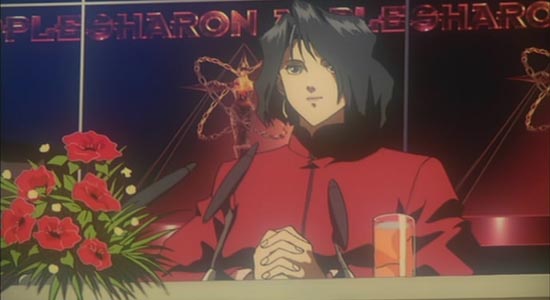
Length isn’t much of a factor, as it’s only 4 episodes long. It is not necessary to know anything about Macross or even Japanese animation to watch this and “get it.” Many of the major creative players on the Japanese side of this production went on to work on Cowboy Bebop as their next project, and on the US side many of the same people who worked on the English dub for this did Bebop as well. If you like one, it is highly probable that you will like the other. Fun fact about the English dub, which ranks among one of the best ever made: it features a then-unknown Bryan Cranston (now of Breaking Bad and Malcolm in the Middle fame) as the main character, Isamu Dyson!
While most of Macross deals with sweeping wars between humans and space aliens, the scope of Macross Plus is more akin to the 1980s movie Top Gun. The wild and reckless Isamu Alva Dyson—an odd name, but the anime DOES open with an English caption stating this work is “dedicated to all pioneers”—is an ace fighter pilot assigned to test out a new prototype transforming airplane known as the YF-19 so as to evaluate its worthiness of replacing the military’s current model of spacefaring jet planes that transform into robots. But the military is evaluating multiple options. In addition to the somewhat “traditional” YF-19, they’re considering another option: the even more experimental YF-21, a plane which is operated by directly connecting it to the pilot’s brain to send and receive information. The YF-21’s test pilot is the by-the-book Guld Goa Bowman. Guld, a half-human/half-alien, is no stranger to Isamu. The two were former best friends back in high school, until something happened to make them bitter enemies. Now, neither man wishes to lose to the other.
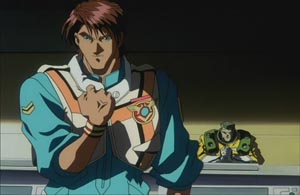
Finding out exactly WHAT happened between these two is a key point of the series, but we know that it had something to do with Myung Fang Lone, a lady who has since become the producer for the most popular musical act in the galaxy: Sharon Apple. Although all Macross stories feature some sort of singer character, Sharon is different from all of them in a couple of ways. The most notable way is that she’s not actually a human being. Sharon Apple is actually a holographic “virtual idol” computer program, and unlike Eve from Megazone 23, everyone in the world is fully aware of this fact.
When Macross Plus first came out in 1994—nearly 17 years ago!—some viewers at the time were skeptical of this concept. Would people seriously want to listen to a computer sing? Would fans honestly attend concerts of a holographic girl? Now that it’s 2011, we know that it’s more plausible than you’d think. An entire subculture centering on Vocaloid programs has emerged among otaku and holographic concerts featuring Vocaloid program mascot Hatsune Miku have occurred. Prior to Vocaloid, the Japanese band Genki Rockets released computer-generated songs and videos featuring a computer-generated female named Lumi. Even in the US mainstream, the software known as Auto-Tune dominates the airwaves in full display, and people are enjoying it. Science fiction is once again gradually becoming reality; indeed, later portions of this anime touch upon the notion of using unmanned drone fighters as a less expensive replacement for human pilots, a subject which is currently a hot-button topic with regards to American military operations.
Selected with the task of leading the charge in creating the AI Sharon Apple’s songs, as well as the rest of the music in Macross Plus, was a then-relatively unknown composer named Yoko Kanno. While she had done prior work, this is the anime series that officially put her on the map and established her as a top-level anime soundtrack composer. After the success of Macross Plus Yoko Kanno would later go on to create songs for The Vision of Escaflowne, Cowboy Bebop, Ghost in the Shell: Stand Alone Complex, Darker than Black, and currently Macross Frontier. The Macross Plus original soundtrack was actually released in America across two CDs, something which was rare at the time and completely unheard-of today. I actually went a step further and also imported the two Japan-only CDs: the Sharon Apple mini-album and the aptly-titled For Fans Only soundtrack. Both of these primarily consisted of tracks that were already on the two CDs released in America, except with a few exclusive tracks. Talk about a ripoff! But I got them anyway. I guess stuff like that is what otaku did back then.
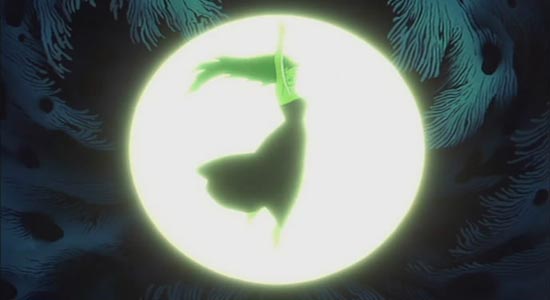
Macross Plus, like its predecessors and successors, rewards this sort of obsessive mentality by virtue of the sheer intricacy of its animation. Whether it’s the concert scenes by Koji Morimoto or the aerial dogfights by Ichiro Itano, those diehard enough to pause the video and parse through it one frame at a time will see that the details of the action are all there. The traditional animation shortcuts are not taken, not even for a series of movements which might only occupy a few seconds on screen. Where most anime would be fine with using speed lines or the like, Macross has always put forth the extra effort to animate exactly how a pilot was able to evade or destroy every single last one of the multiple missiles fired at them. Macross Plus is no exception. Otaku no Video is no longer relevant to modern anime fan practices or pursuits, but seeing the characters freeze-framing through the original Macross TV series to admire how the animators included the usage of countermeasures is probably where I got the idea from. That makes me wonder if anyone out there has started doing something because they saw it done in Genshiken…or worse yet, Welcome to the NHK or Ressentiment!
 Despite having been produced so long ago, Macross Plus remains nearly timeless in its accessibility. It may not have been animated in high-definition, but it still looks fantastic. CG usage is prevalent, and while this could have potentially been something that made the entire production look “old” on account of the leaps and bounds made in CG visuals these last few decades, the computer graphics were primarily used only in places where it would make sense for what you’re seeing to resemble a computer display. No ugly CG cars (or in Golgo 13’s case, helicopters) here! After all these years, the animation and character designs still hold up.
Despite having been produced so long ago, Macross Plus remains nearly timeless in its accessibility. It may not have been animated in high-definition, but it still looks fantastic. CG usage is prevalent, and while this could have potentially been something that made the entire production look “old” on account of the leaps and bounds made in CG visuals these last few decades, the computer graphics were primarily used only in places where it would make sense for what you’re seeing to resemble a computer display. No ugly CG cars (or in Golgo 13’s case, helicopters) here! After all these years, the animation and character designs still hold up.
How many years? Put it this way: the first episode of Macross Plus actually aired at Anime Expo 1994 shortly before it even came out in Japan! I wasn’t there, but this was the pre-Sailor Moon era before girls were present at anime conventions in significant amounts so I imagine the level of BO in that room was positively off the charts; something akin to the fatal miasma cloud in Nausicaa of the Valley of the Wind. In retrospect, debuting in America before Japan seems apropos. Nearly all of the signs are in English, and the racially-diverse cast does not behave in culturally “Japanese” fashion. Macross Plus embodies everything about Macross that American anime fans in the mid-1990s wanted in something with “Macross” in the title: spectacular action, adult characters entrenched in an adult romance, breathtaking animation, and an excellent and varied soundtrack. To me and many other US fans, Macross Plus is the Macross sequel, but in Japan the substantially longer, more continuity-bound, and relatively light-hearted Macross 7 enjoys that distinction.
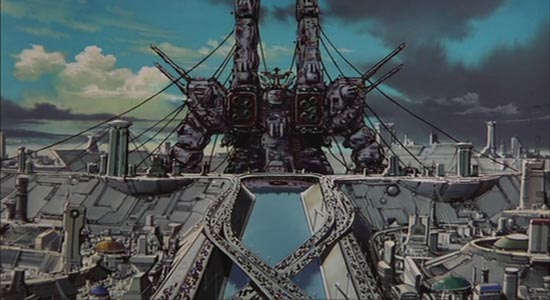
I suppose a key reason for this is owed to the fact that even after all these years, Macross Plus remains the newest entry in the franchise to ever be legally released in the US. In the grand scheme of things, relatively little of Macross ever made it to the United States via official channels. Even today, most people who even know of the Macross name are aware of it by way of Robotech, and that was from 1985. Robotech, by the way, was a compiled Americanized version of three different Japanese animated television series, and the one nearly universally agreed-upon as the best part was the relatively-unaltered Superdimensional Fortress Macross. In the interest of brevity, let’s leave it at that!
The 4 episodes of Macross Plus were themselves compiled and edited down into a single two hour feature film and released as Macross Plus: The Movie, but I personally wouldn’t recommend watching that instead of the series proper. While the movie does include an extended ending along with some newly animated scenes—some of which even involve naked female breasts or additional gore!—the events are reshuffled in a way that can make things a little tough to follow if you haven’t already seen it before. If you’ve already seen the OAV, then watching the movie makes for a nice bonus experience.
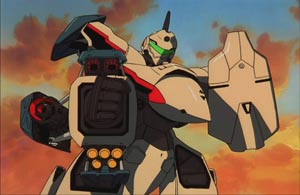 Being a side story, most of Macross Plus unfolds not on a massive space fortress like most of the other installments but on a colonized planet, Eden, where dinosaur-like creatures and strange birds roam amidst man-made technological marvels. Given the relative lack of super space fortress-ness, some may question the need for this to be a Macross story at all as this sci-fi milieu is ultimately the backdrop for what is almost assuredly the darkest and most personal story ever told in Macross; a bold claim considering how the original featured near-total destruction of the planet Earth and the human race! Without giving anything away, it’s my belief that Macross Plus is more than worthy to bear the name and accomplishes more in its 4 episodes than many series manage in 13 or more. To this day, I hold it up as an example that anime is capable of telling serious stories with three-dimensionally flawed yet compelling characters, all while still being a commercial product designed to sell merchandise. It doesn’t have to be one or the other.
Being a side story, most of Macross Plus unfolds not on a massive space fortress like most of the other installments but on a colonized planet, Eden, where dinosaur-like creatures and strange birds roam amidst man-made technological marvels. Given the relative lack of super space fortress-ness, some may question the need for this to be a Macross story at all as this sci-fi milieu is ultimately the backdrop for what is almost assuredly the darkest and most personal story ever told in Macross; a bold claim considering how the original featured near-total destruction of the planet Earth and the human race! Without giving anything away, it’s my belief that Macross Plus is more than worthy to bear the name and accomplishes more in its 4 episodes than many series manage in 13 or more. To this day, I hold it up as an example that anime is capable of telling serious stories with three-dimensionally flawed yet compelling characters, all while still being a commercial product designed to sell merchandise. It doesn’t have to be one or the other.
If you’ve ever hesitated with watching Macross for any number of perfectly valid reasons, then look no further than Macross Plus. You CAN just watch this one if you so desire, and it won’t take much of your time. It’s the perfect “gateway” to the world of one of anime’s flagship series, and just as is the case with Cowboy Bebop you can still purchase Macross Plus on DVD in the US with little difficulty. In fact, you can even purchase it via iTunes! Do note that the US DVDs were originally authored decades ago, and while the Japanese remastered editions were never released stateside, the quality differences between the two are not that major unless you know what to look for.
So go watch some cool cartoons about jet planes that transform into robots, already! The show’s about to begin…


